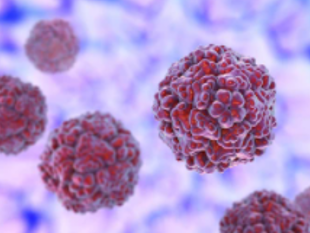Lipidomics in Enterovirus Infection
Lipids play a central role in multiple stages of the virus replication cycle. To achieve optimal virus replication, specific lipid profiles are required during viral infection. Based on mass spectrometry (MS)-based lipidomics, we focus on the perturbations in the host cell lipidomic profiles induced upon enterovirus infection.
Enteroviruses

Enteroviruses belong to the genus Enterovirus in the family Picornaviridae and are non-enveloped single-stranded positive-sense RNA viruses associated with important diseases in humans and mammals. Enteroviruses contain 15 species, including Enterovirus A to L and Rhinovirus A to C. Among them, EV-A71 and CV-A16 are the most common causes of hand, foot, and mouth disease (HFMD) among children worldwide. Moreover, severe infections with these viruses are related to life-threatening complications, such as myocarditis, encephalitis, and aseptic meningitis. Enteroviruses are known to cause large-scale remodeling of the intracellular membrane during viral replication. However, the pathogenesis underlying these clinical and pathological features is not fully understood. Lipidomic profiles of enterovirus-infected cells such as EV-A71 and CV-A16 may provide insights into the role of lipids in the pathogenesis of enterovirus infection and facilitate the development of novel antiviral therapies.
Lipidomics in enterovirus infection
For lipidomic analysis of enterovirus infections, the researchers established a reliable and robust platform to characterize the changes of lipidome in rhabdomyosarcoma (RD) cells with EV-A71 and CV-A16 infections using liquid chromatography-mass spectrometry (LC-MS). Based on an unbiased lipidomics approach, there were 47 lipids within 11 lipid classes identified among EV-A71-infected, CV-A16-infected, and mock-infected samples. Four polyunsaturated fatty acids (PUFAs) consistently upregulated after EV-A71 and CV-A16 infection, including docosahexaenoic acid (DHA), arachidonic acid (AA), eicosapentaenoic acid (EPA), and eicosapentaenoic acid (EPA). The results showed that enteroviruses significantly perturbed the expression of a wide range of host lipids during infection.
MS-based lipidomic analysis
The researchers compared liposome profiles of RD cells infected with EV-A71 or CV-A16 with those of simulated infected cells using liquid chromatography–electrospray ionization–quadrupole–time of flight-mass spectrometry (UPLC-ESI-Q-TOF-MS). After normalizing, the lipid features in the MS features list was further analyzed with MetaboAnalyst and SIMCA-P software. The partial least squares discriminant analysis (PLS-DA) score plots were used to visualize the lipid distribution and identification of virus infection and simulated infection samples. The principal component analysis (PCA) score plots were employed to visualize the lipid distribution and correlation of virus infection and simulated infection samples. Moreover, a heat map based on the lipid MS features list was constructed to characterize the lipidomic changes upon EV-A71 and CV-A16 infection.
The characteristics of host lipid profile changes after EV-A71 and CV-A16 infection provide a basis for further understanding of the pathogenesis of enterovirus infection and new antiviral strategies. Creative Proteomics has been developing metabolomics detection methods and data analysis methods for many years. Based on professional scientists and advanced platforms, we can identify different lipids and determine their alternations in various matrices, including plasma, serum, and urine, and cell extracts. For more information on how we can help you, please feel free to contact us.
Reference
- Yan, B., et al. (2019). "Lipidomic profiling reveals significant perturbations of intracellular lipid homeostasis in enterovirus-infected cells." International journal of molecular sciences, 20(23), 5952.
Related services
* For research use only.

